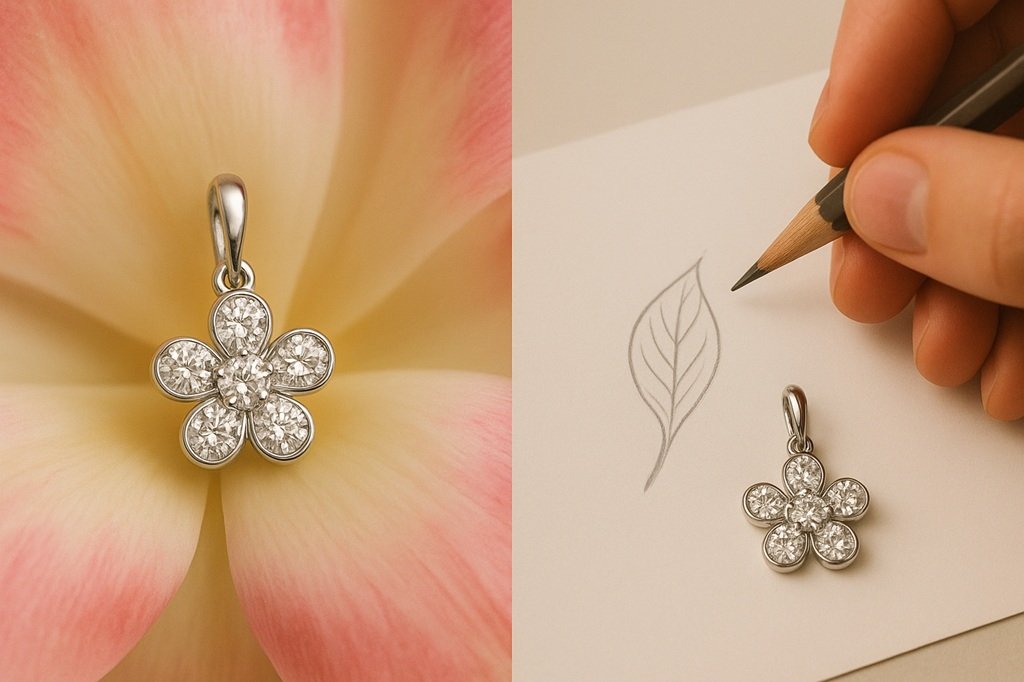Every piece of jewelry you own tells a story—whether it’s a milestone, a sentiment, or an expression of personal taste. But for those who want something truly one-of-a-kind, the journey starts long before the sparkle. It begins with an idea, a conversation, and the creative process that brings it to life. In the world of custom jewelry design, the path from inspiration to finished piece is equal parts artistry, craftsmanship, and personal connection. This guide walks you through the steps that transform your vision into a wearable reflection of your style.
Step 1: Inspiration and Concept Development
The process begins with inspiration, often drawn from life events, personal milestones, or even a favorite era in fashion. A designer will work with you to understand your tastes, preferences, and the story you want your piece to tell. This conversation sets the tone for everything that follows, ensuring the final creation reflects your individuality.
- Mood Boards and Visual Cues: Images, textures, and patterns help capture your desired look.
- Personal Elements: Symbols, initials, or stones with sentimental value add meaning.
- Style References: Vintage, modern, minimalistic, or ornate—your style guides the design direction.
Step 2: Sketching and Initial Design
Once the concept is clear, the designer begins to translate ideas into visual form. This usually starts with hand sketches that capture different variations of the concept. You’ll review and provide feedback at this stage to ensure every detail aligns with your vision.
- Multiple design options give you a choice of aesthetic approaches.
- Designers often use scaling and proportion checks to ensure comfort and wearability.
- Early collaboration here minimizes revisions later in the process.
Step 3: Digital Rendering and Refinement
After approving a sketch, the design moves into the digital phase. Computer-Aided Design (CAD) software creates a 3D model, allowing you to see your piece from every angle before it’s made.
- Detailed Previews: CAD files show how stones will be set and how the metal will curve or fold.
- Realistic Textures: You can visualize finishes like matte, brushed, or high polish.
- Functional Adjustments: Designers can modify clasp mechanisms, stone height, and band thickness for comfort.
This stage ensures precision and accuracy, eliminating guesswork before production begins.
Step 4: Material Selection
Choosing the right materials is one of the most exciting parts of the process. Your selection of metals and gemstones will directly influence the look, feel, and value of the piece.
- Metals: Options like platinum, gold (yellow, white, rose), silver, or mixed metals.
- Gemstones: Diamonds, sapphires, emeralds, or birthstones for personalization.
- Ethical Sourcing: Many jewelers now offer recycled metals and conflict-free or lab-grown stones.
A good designer will guide you through the trade-offs in durability, appearance, and price to match your priorities.
Step 5: Prototyping and Model Approval
Before final production, a prototype is often created—either as a resin or wax model using 3D printing or traditional carving methods. This gives you the opportunity to try the piece on for size and comfort.
- Prototypes ensure accurate sizing and proportion.
- Changes at this stage are easier and less costly.
- Feedback leads to final tweaks before the piece goes into full production.
Step 6: Craftsmanship and Assembly
This is where your vision takes physical form. Skilled artisans handcraft the piece, setting stones with precision, shaping metals, and applying the final finish.
- Stone Setting: Each gemstone is placed and secured to enhance brilliance and durability.
- Metal Work: Bands, clasps, and links are formed, polished, and inspected.
- Quality Control: Every detail is checked to ensure the finished piece meets high standards.
Step 7: Final Presentation and Delivery
The last step is often the most rewarding. Your finished piece is presented in a way that matches its significance—whether in a custom box, accompanied by certification, or with documentation on materials used.
- Care Instructions: Guidance on how to maintain shine and integrity over time.
- Authentication: Certificates for gemstones and materials for transparency.
- Photography: Many designers offer professional photos so you can share your piece’s story.
Why This Process Matters
Taking the time to go through each stage ensures that the final result is not just a piece of jewelry, but a personal statement. This method of creation honors both design artistry and craftsmanship, guaranteeing that your piece will stand the test of time—both in style and meaning.
Final Take: Your Style, Your Legacy
The process of crafting a piece that perfectly reflects your style is more than a transaction—it’s a collaboration. From the first spark of inspiration to the moment you see it finished, each step is tailored to capture your vision and translate it into something tangible. The result is a piece that isn’t just worn; it’s cherished, celebrated, and passed down, becoming part of your personal legacy.


